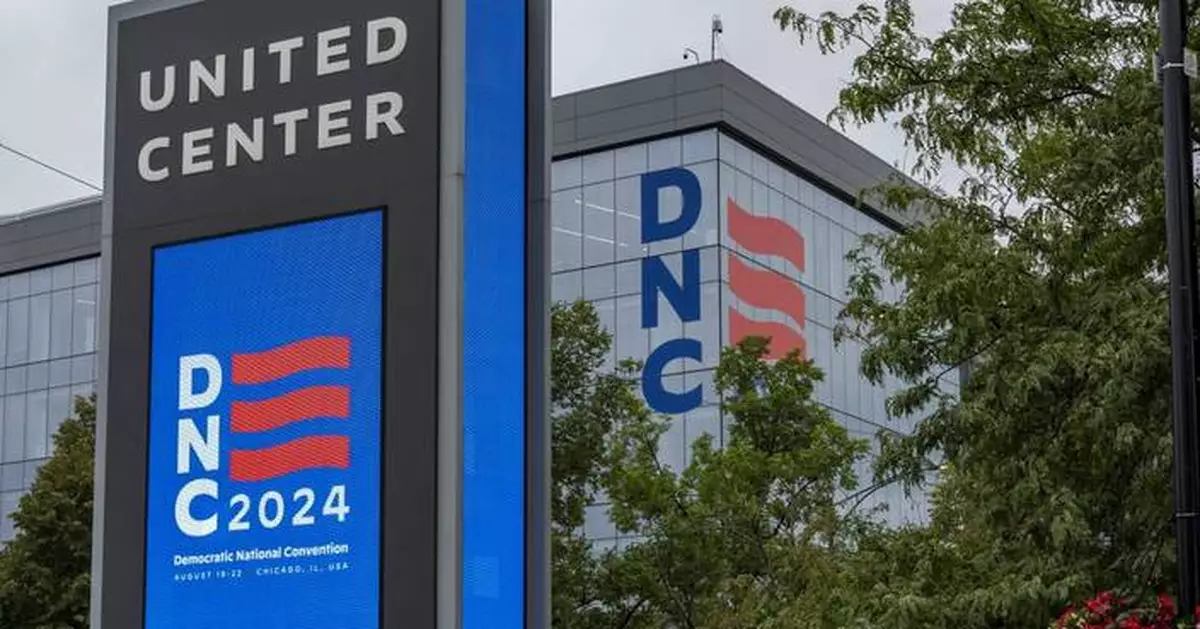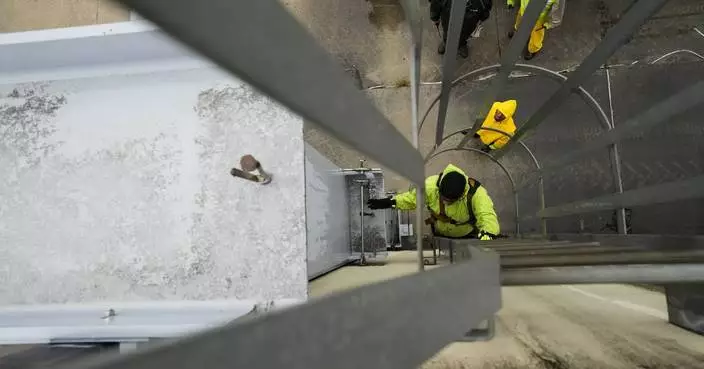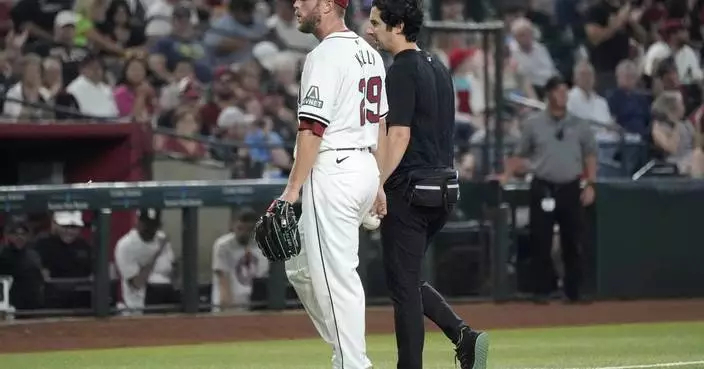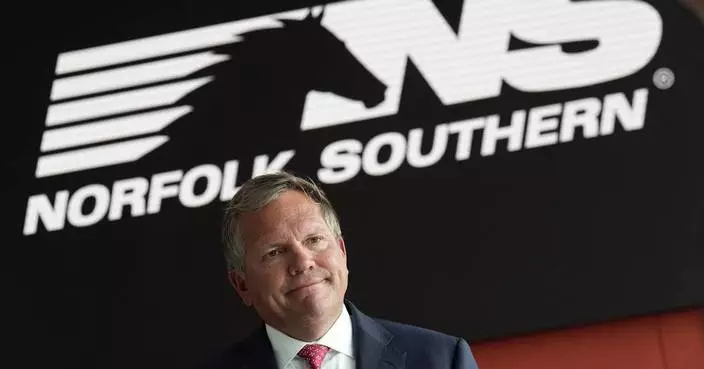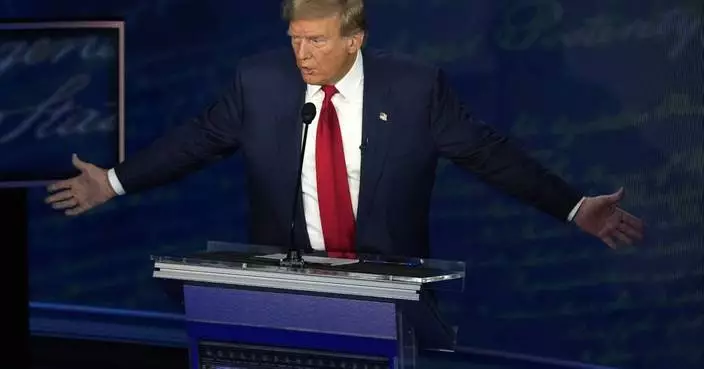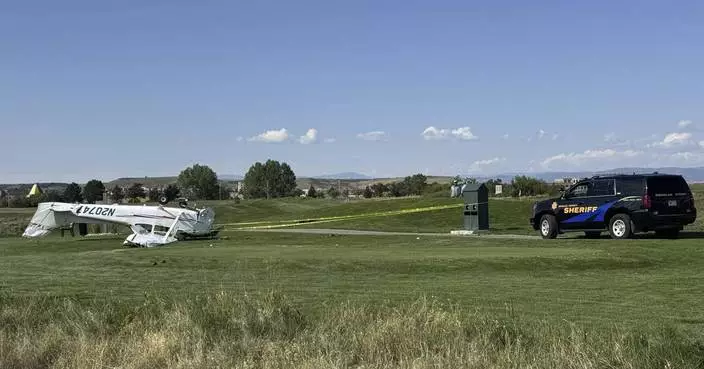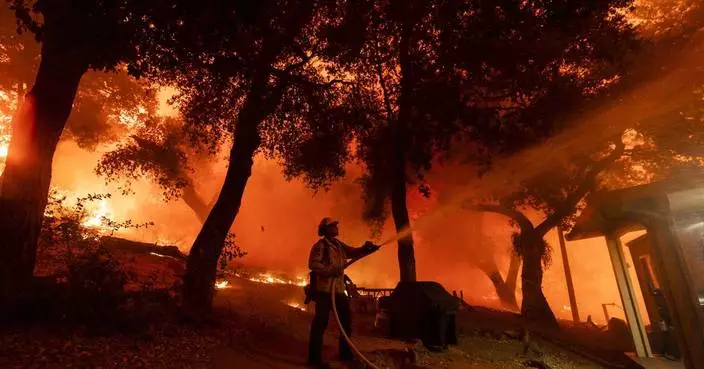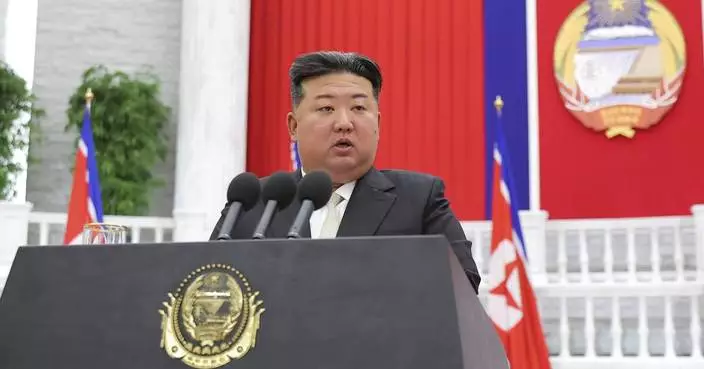CHICAGO (AP) — The Democratic National Convention kicks off Monday, with delegates and officials descending on Chicago after a wild few weeks that saw the party switch out its nominee, upending what had already been an unprecedented campaign year.
With the departure of President Joe Biden from the campaign, and Vice President Kamala Harris' swift ascension to the top of the ticket, Democrats have essentially rejiggered the general election fight against Republican nominee and former President Donald Trump just months before the first votes.
The campaign redesign has also required changes in the platform that party officials will adopt before proceedings in Chicago, as well as physical reconfigurations of the signage and other materials in and around the convention hall, to reflect Democrats' new ticket.
Here’s how to watch the action at the DNC:
The convention begins Monday and runs through Thursday, with televised speeches and floor activity happening each night in prime time. A complete schedule hasn't been released, but Harris, running mate Minnesota Gov. Tim Walz, Biden, former Presidents Barack Obama and Bill Clinton, as well as 2016 nominee Hillary Clinton and former first lady Michelle Obama are all expected to speak during the week's evening programming.
The DNC will livestream proceedings across more than a dozen platforms, including the convention website, YouTube and X. For the first time in convention history, organizers say, they will also host vertical streams across TikTok, Instagram, and YouTube to make the proceedings more accessible on mobile devices.
Convention officials say there will be English and Spanish versions, as well as American Sign Language interpretation and an audio description service.
A number of network and cable news outlets have announced special programming for the prime-time portions of the convention, when Harris and others will give speeches from the hall where delegates are convening.
Other media outlets, both local and national, will stream whatever is happening on the floor. The actual space itself is closed to the public, behind several layers of security accessible only to delegates, officials, volunteers and credential media.
The DNC has also credentialed social media influencers for this year's convention, meaning that there may be a number of ways to see first-hand happenings across those accounts on various platforms, too.
Democrats are convening at the United Center, home to the NBA’s Chicago Bulls and NHL's Chicago Blackhawks. Other facilities such as the McCormick Place Convention Center are hosting event spaces, including areas where convention officials will hold media briefings, and delegates will hold caucus meetings and other gatherings.
Illinois is a reliably Democratic state when it comes to presidential elections, voting for the Democratic candidate in every presidential election since 1992.
Chicago was the scene of Democrats' raucous floor fight in 1968 — a year fraught with President Lyndon B. Johnson's decision not to seek reelection and the assassination of candidate Robert F. Kennedy — that ended with delegates defeating a peace platform seeking an end to the Vietnam war. Thousands of anti-war protesters marched in the streets and were attacked by police.
There's uncertainty afoot about the Democrats' return to Chicago, where protesters plan to oppose the Biden administration’s support for Israel in its war with Hamas — leaving some to wonder whether a 1968 redux could be coming. Police say they've undergone extensive de-escalation training in preparation.
Harris is expected to give her nomination acceptance on Thursday night, as is tradition. Walz will accept his nomination as her running mate on Wednesday night. Biden will speak Monday and the Obamas are scheduled to speak Tuesday.
Given the unprecedented nature of how this campaign year has unfolded, much of what the top-of-the-ticket candidates will be doing is introducing themselves to a national audience. Harris began her own run for president — not as Biden's running mate — only four weeks ago, and made Walz her pick only two weeks after that.
America has still had more time to get to know Walz before his speech than they did Trump's running mate, Ohio Sen. JD Vance, before Republicans' convention last month. Trump waited until the convention's opening day to announce Vance as his running mate in a post on his Truth Social platform.
The DNC on Sunday listed its themes for each of the four days: “For the People,” “A Bold Vision for America's Future,” “A Fight for Our Freedoms" and “For Our Future.” Convention organizers are likely to release more specifics each morning for that night's programming.
On Sept. 10. less than three weeks after the DNC wraps up, Harris and Trump are slated to meet on stage for a debate hosted by ABC News.
Walz and Vance also have a debate set for Oct. 1, and it's possible that more presidential and vice presidential debates could be scheduled.
Associated Press writer Darlene Superville in Washington contributed to this report. Meg Kinnard can be reached at http://x.com/MegKinnardAP
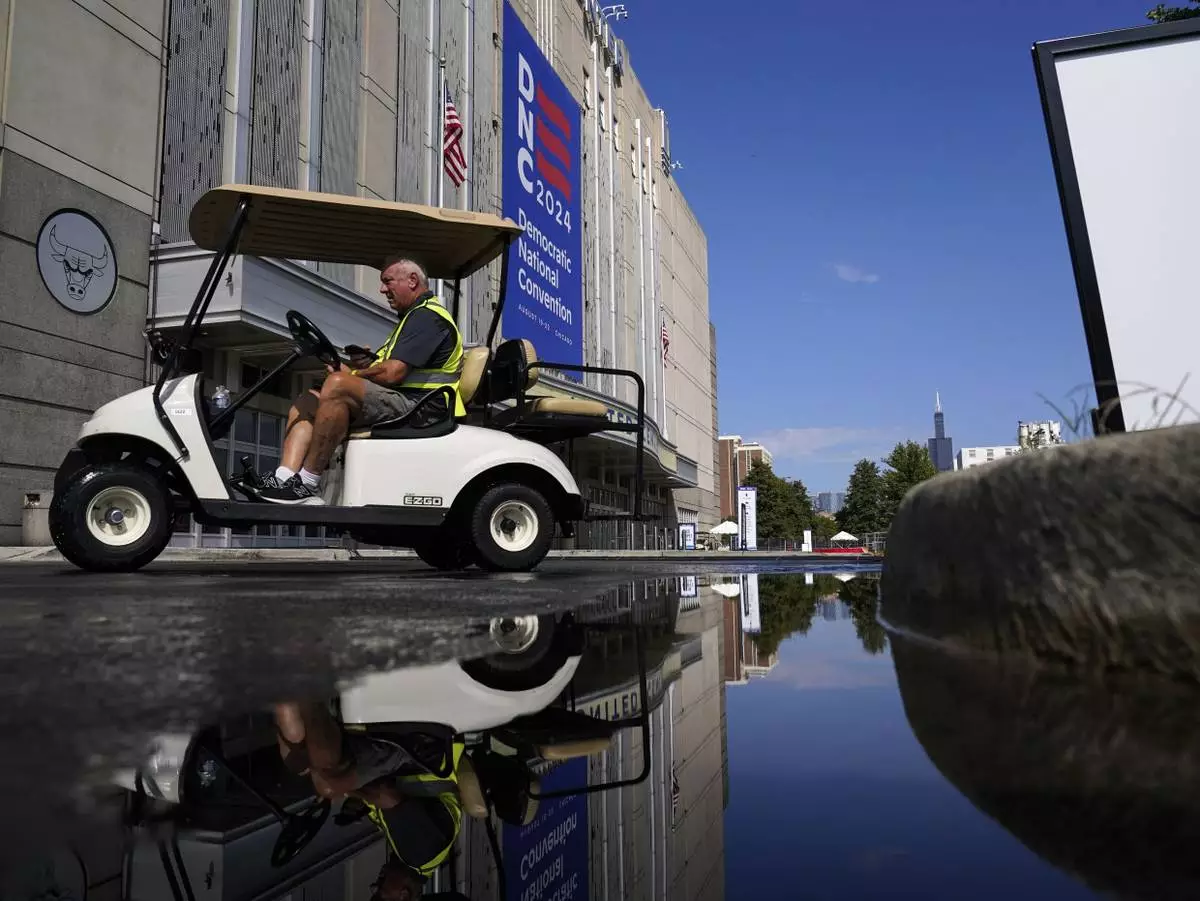
Workers prepare for the Democratic National Convention at United Center, Saturday, Aug. 17, 2024, in Chicago. (AP Photo/Kiichiro Sato)
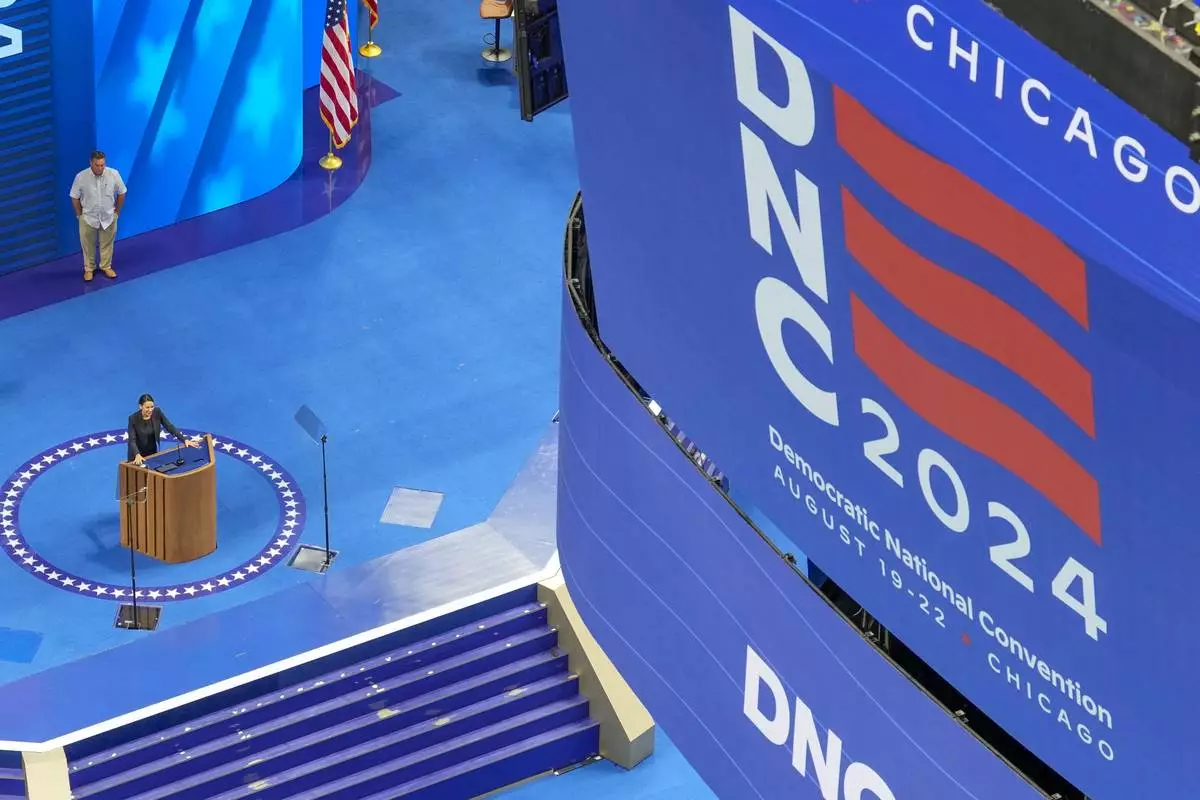
Rep. Alexandria Ocasio-Cortez, D-NY, stands at the podium at the Democratic National Convention at the United Center Saturday, Aug. 17, 2024, in Chicago. (AP Photo/Morry Gash)
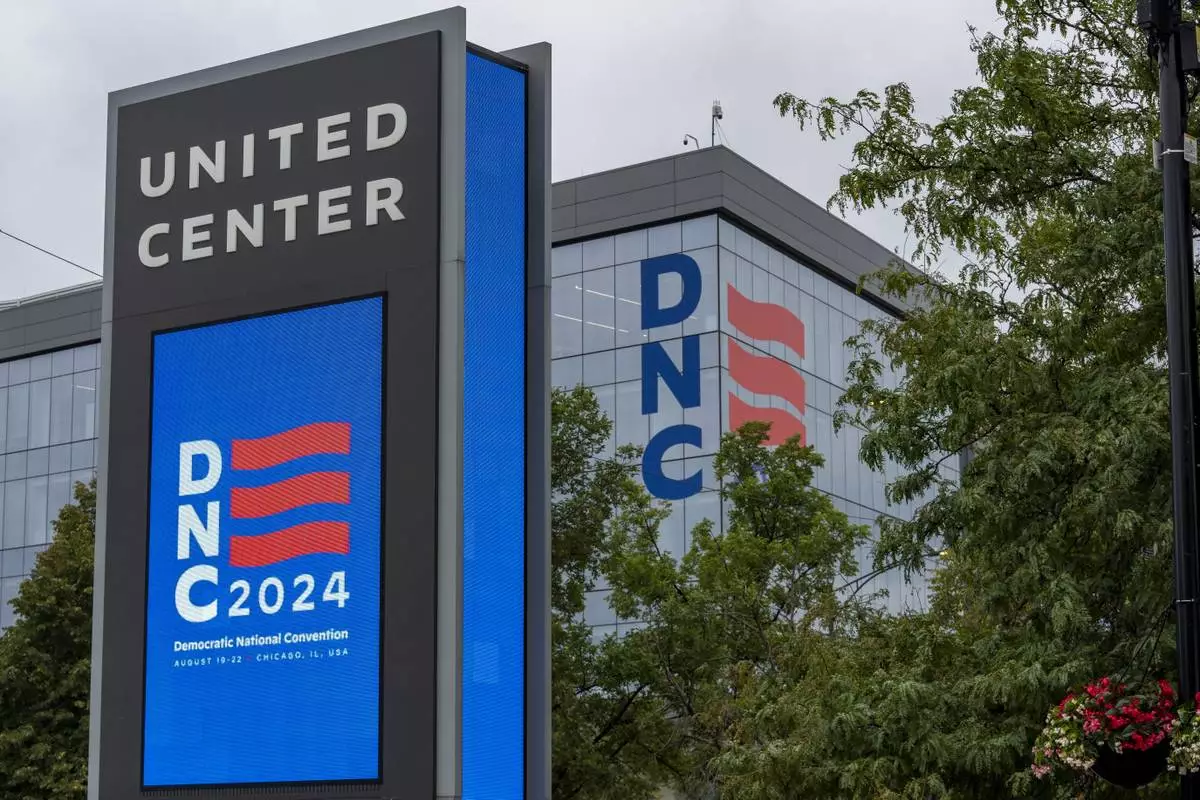
Work continues at the United Center before the upcoming Democratic National Convention, Thursday, Aug. 15, 2024, in Chicago. (AP Photo/Alex Brandon)
LIMA, Peru (AP) — Alberto Fujimori, whose decade-long presidency began with triumphs righting Peru’s economy and defeating a brutal insurgency only to end in a disgrace of autocratic excess that later sent him to prison, has died. He was 86.
His death Wednesday in the capital, Lima, was announced by his daughter Keiko Fujimori in a post on X.
He had been pardoned in December from his convictions for corruption and responsibility for the murder of 25 people. His daughter said in July that he was planning to run for Peru’s presidency for the fourth time in 2026.
Fujimori, who governed with an increasingly authoritarian hand in 1990-2000, was pardoned in December from his convictions for corruption and responsibility for the murder of 25 people. His daughter said in July that he was planning to run for Peru’s presidency for the fourth time in 2026.
The former university president and mathematics professor was the consummate political outsider when he emerged from obscurity to win Peru’s 1990 election over writer Mario Vargas Llosa. Over a tumultuous political career, he repeatedly made risky, go-for-broke decisions that alternately earned him adoration and reproach.
He took over a country ravaged by runaway inflation and guerrilla violence, mending the economy with bold actions including mass privatizations of state industries. Defeating fanatical Shining Path rebels took a little longer but also won him broad-based support.
His presidency, however, collapsed just as dramatically.
After briefly shutting down Congress and elbowing himself into a controversial third term, he fled the country in disgrace in 2000 when leaked videotapes showed his spy chief, Vladimiro Montesinos, bribing lawmakers. The president went to Japan, the land of his parents, and famously faxed in his resignation.
He stunned supporters and foes alike five years later when he landed in neighboring Chile, where he was arrested and then extradited to Peru. He had hoped to run for Peru’s presidency in 2006, but instead wound up in court facing charges of abuse of power.
The high-stakes political gambler would lose miserably. He became the first former president in the world to be tried and convicted in his own country for human rights violations. He was not found to have personally ordered the 25 death-squad killings for which he was convicted, but he was deemed responsible because the crimes were committed in his government’s name.
His 25-year sentence did not stop Fujimori from seeking political revindication, which he planned from a prison built in a police academy on the outskirts of Lima, the capital.
His congresswoman daughter Keiko tried in 2011 to restore the family dynasty by running for the presidency but was narrowly defeated in a runoff. She ran again in 2016 and 2021, when she lost by just 44,000 votes after a campaign in which she promised to free her father.
Fujimori told The Associated Press in 2000, seven months before his fall from power, that he viewed political rivals as chess pieces to be outmaneuvered with cool detachment.
“In Latin America, I am a special case,” he said. “I have had a special formation within an Oriental environment of discipline and perseverance.”
Fujimori’s presidency was, in fact, a brash display of outright authoritarianism, known locally as “caudillismo,” in a region shakily stepping away from dictatorships toward democracy.
He is survived by his four children. The oldest, Keiko, became first lady in 1996 when his father divorced his mother, Susana Higuchi, in a bitter battle in which she accused Fujimori of having her tortured. The youngest child, Kenji, was elected a congressman.
Fujimori was born July 28, 1938, Peruvian Independence Day, and his immigrant parents picked cotton until they could open a tailor’s shop in downtown Lima.
He earned a degree in agricultural engineering in 1956, and then studied in France and the United States, where he received a graduate degree in mathematics from the University of Wisconsin in 1972.
In 1984 he became rector of the Agricultural University in Lima, and six years later, he ran for president without ever having held political office, billing himself as a clean alternative to Peru’s corrupt, discredited political class.
He played on the Peruvian stereotype of the honest, hard-working Asian, and raised hopes in an economically distressed nation by arguing that he would attract Japanese aid and technology.
He soared from 6 percent in the polls a month before the 1990 election to finish second out of nine in the balloting. He went on to beat Vargas Llosa in a runoff.
The victory, he later said, came from the same frustration that fueled the Shining Path.
“My government is the product of rejection, of being fed up with Peru because of the frivolity, corruption and nonfunctioning of the traditional political class and the bureaucracy,” he said.
Once in office, Fujimori’s tough talk and hands-on style at first won him only plaudits, as car bombings still ripped through the capital and annual inflation approached 8,000 percent.
He applied the same economic shock therapy that Vargas Llosa had advocated but he had argued against in the campaign.
Privatizing state-owned industries, Fujimori slashed public spending and attracted record foreign investment.
Known affectionately as “El chino,” due to his Asian ancestry, Fujimori often donned peasant garb to visit jungle Indigenous communities and highland farmers, while delivering electricity and drinking water to dirt-poor villages. That distinguished him from the patrician, white politicians who typically lacked his commoner’s touch.
Fujimori also gave Peru’s security forces free rein to take on the Shining Path.
In September 1992, police captured rebel leader Abimael Guzmán. Deservedly or not, Fujimori took credit.
Perhaps his most famous calculation came in April 1997 when he sent U.S.-trained commandos into the Japanese ambassador’s residence where 14 leftist Tupac Amaru rebels had held 72 hostages for months.
Only one hostage was killed. All the hostage-takers, however, were killed, allegedly on Montesinos’ orders.
Taking power just years after much of the region had shed dictatorships, the former university professor ultimately represented a step back. He developed growing a taste for power and resorted to increasingly anti-democratic means to amass more of it.
In April 1992, he shut down Congress and the courts, accusing them of shackling his efforts to defeat the Shining Path and spur economic reforms.
International pressure forced him to call elections for an assembly to replace the Congress. The new legislative body, dominated by his supporters, changed Peru’s constitution to allow the president to serve two consecutive five-year terms. Fujimori was swept back into office in 1995, after a brief border war with Ecuador, in an election landslide.
Human rights advocates at home and abroad blasted him for pushing through a general amnesty law forgiving human rights abuses committed by security forces during Peru’s “anti-subversive” campaign between 1980 and 1995.
The conflict would claim nearly 70,000 lives, a truth commission found, with the military responsible for more than a third of the deaths. Journalists and businessmen were kidnapped, students disappeared and at least 2,000 highland peasant women were forcibly sterilized.
In 1996, Fujimori’s majority bloc in Congress put him on the path for a third term when it approved a law that determined his first five years as president didn’t count because the new constitution was not yet in place when he was elected.
A year later, Fujimori’s Congress fired three Constitutional Tribunal judges who tried to overturn the legislation, and his foes accused him of imposing a democratically elected dictatorship.
By then, almost daily revelations were showing the monumental scale of corruption around Fujimori. About 1,500 people connected to his government were prosecuted on corruption and other charges, including eight former Cabinet ministers, three former military commanders, an attorney general and a former chief of the Supreme Court.
The accusations against Fujimori led to years of legal wrangling. In December, Peru’s Constitutional Court ruled in favor of a humanitarian pardon granted to Fujimori on Christmas Eve in 2017 by then-President Pablo Kuczynski. Wearing a face mask and getting supplemental oxygen, Fujimori walked out of the prison door and got in a sport utility vehicle driven by his daughter-in-law.
The last time he was seen in public was on Sept. 4, leaving a private hospital in a wheelchair. He told the press that he had undergone a CT scan and when asked if his presidential candidacy was still going ahead, he smiled and said “We’ll see, we’ll see.”
Frank Bajak, the principal writer of this obituary, retired from The Associated Press in 2024. Associated Press writer Regina Garcia Cano in Mexico City contributed.

FILE - Former Peru's President Alberto Fujimori waves at his home in Santiago after leaving the academy for the training of corrections officers in Santiago, Chile, May 18, 2006. (AP Photo/Claudio Santana, File)
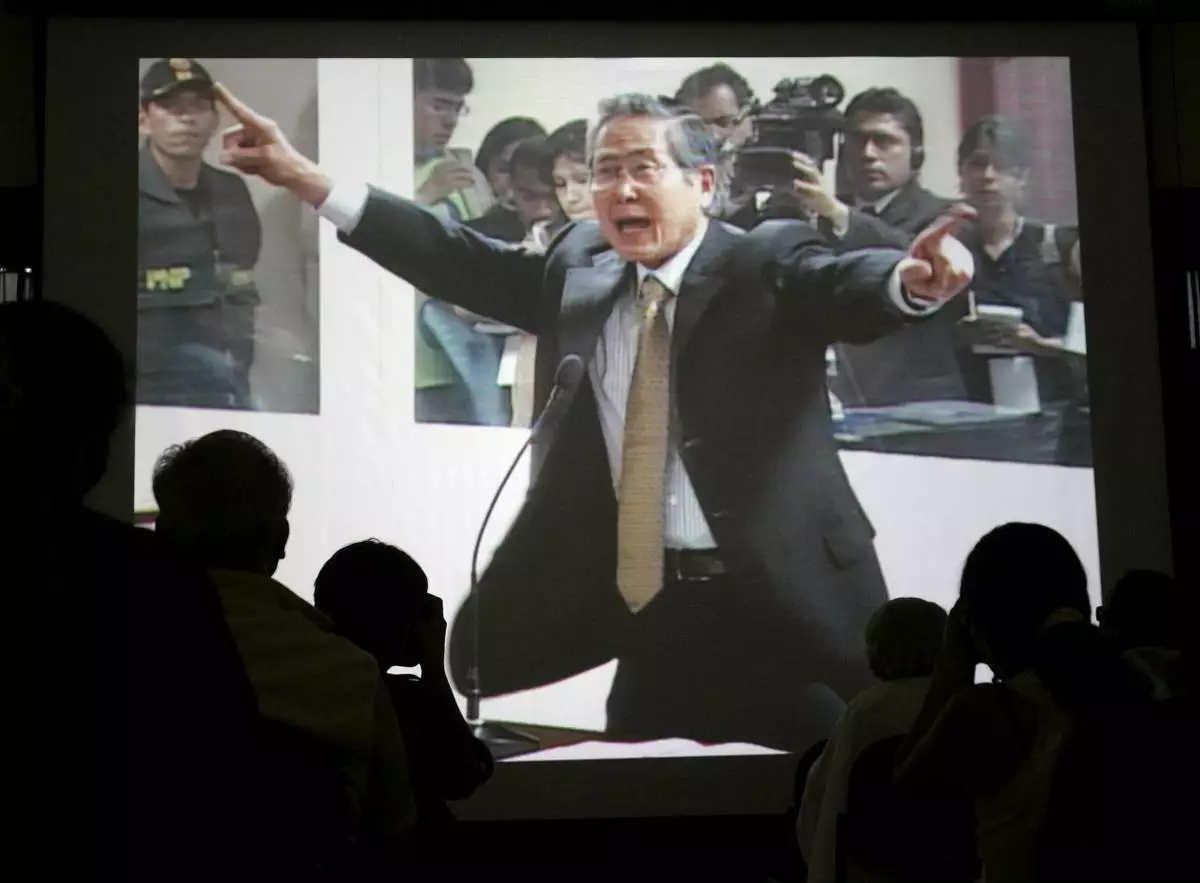
FILE - Peru's former President Alberto Fujimori is seen gesturing on a screen during the first day of his trial on charges of alleged human rights violations and corruption during his government at a police base in Lima, Dec. 10, 2007. (AP Photo/Martin Mejia, File)





